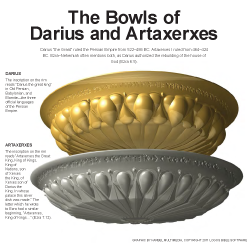11:1–24 This chapter presents the solution to the problem of Neh 7:1–4—there were not enough people living in Jerusalem to fill and defend it. |
11:1 cast lots In casting lots, the fate of each family was not up to the whim of the governor—it was the will of God.
the fate of each family was not up to the whim of the governor—it was the will of God.
one out of ten to live in the holy city of Jerusalem The nation earlier pledged a tenth of its produce to Yahweh (10:37). It now devotes a tenth of its citizens to the service of Yahweh. This repopulation effort was needed to protect the city of Jerusalem and the temple.
the holy city of This epithet is found elsewhere only in vv. 18; Isa 48:2; 52:1; and Dan 9:24.
11:4 lived in Jerusalem Estimates of Jerusalem’s population at this time range from 4,800–8,000. The list provided here is very similar to the one in 1 Chr 9.
11:9 their chief officer This probably refers to an administrative office subordinate to the high priest (Neh 11:14, 22). It could also be a reference to military rank.
11:16 work of the Levites outside This may refer to taking care of the outside walls and grounds of the temple building. It could also refer to the work of the Levites outside the temple area itself (such as collecting tithes).
11:21 Ophel The beginning of the hill on which the temple was located.
11:23 the king This probably refers to Artaxerxes, the Persian king. See note on 2:1.
11:25–36 Those cities south of Jerusalem were located in the territory originally given to the tribe of Judah. Nehemiah details 17 prominent villages in this region (vv. 25–30). Those cities north of Jerusalem were located in the territory originally given to the tribe of Benjamin. Nehemiah identifies 15 significant towns in this region (vv. 31–35). |
11:25 Kiriath-Arba Hebron, located about 19 miles south of Jerusalem.
Dibon This probably refers to modern ed-Dheib, located about 10 miles south of Hebron. This city is to be distinguished from the Moabite Dibon (or Dimon) of Isa 15:9.
11:26 Moladah Modern el-Milh, located 10 miles east of Beer-sheba.
11:27 Hazar Shual Located five miles east of Beer-sheba.
Beersheba Located almost 30 miles southwest of Hebron.
11:29 Zorah Located eight miles west of Jerusalem.
11:30 Lachish Located 30 miles southwest of Jerusalem.
Valley of Hinnom Located southwest of Jerusalem. This valley was the boundary between Judah and Benjamin (Josh 15:8).
11:31 Geba Located just over five miles north of Jerusalem.
Bethel Located 10 miles north of Jerusalem.

|
About Faithlife Study BibleFaithlife Study Bible (FSB) is your guide to the ancient world of the Old and New Testaments, with study notes and articles that draw from a wide range of academic research. FSB helps you learn how to think about interpretation methods and issues so that you can gain a deeper understanding of the text. |
| Copyright |
Copyright 2012 Logos Bible Software. |
| Support Info | fsb |
 Loading…
Loading…


